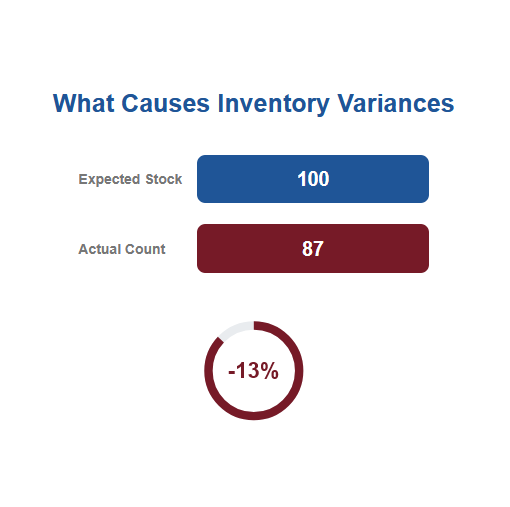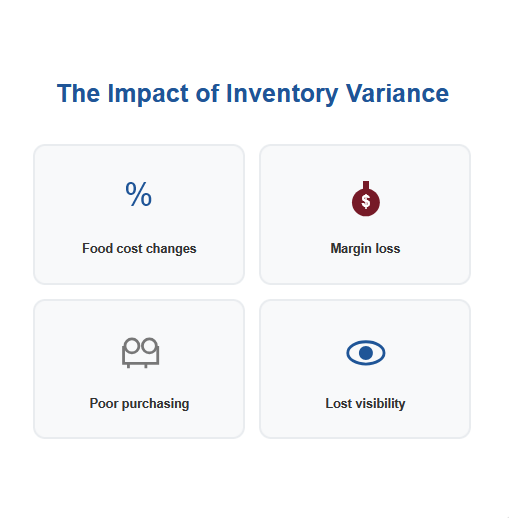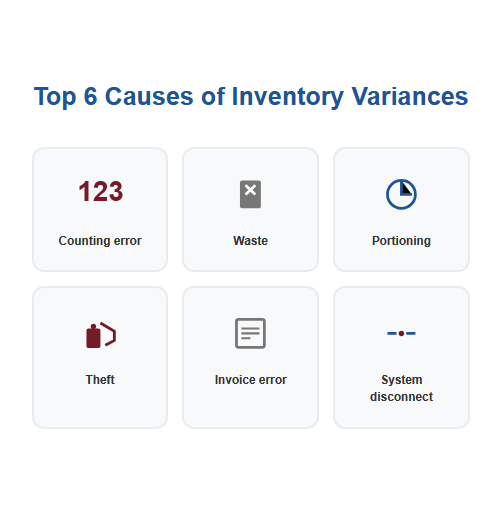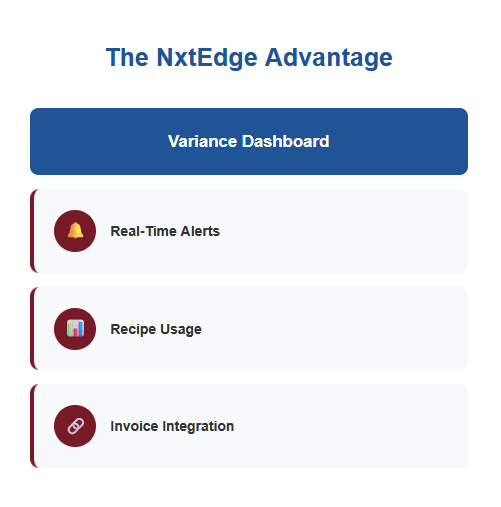Even the best-run kitchens experience inventory variances — but the key difference is whether they can explain why they happen.
An inventory variance occurs when your expected stock (based on purchasing and sales) doesn’t match your actual physical count. These discrepancies might seem small, but across hundreds of items, they quietly erode profit.
Understanding what causes inventory variances — and how to prevent them — is essential for accurate food costs, better forecasting, and stronger cash flow.
What Inventory Variances Really Mean
A variance isn’t just a math error — it’s a signal. It tells you something in your operation isn’t aligning between purchasing, production, or reporting.
Inventory variances affect:
-
Food cost percentage: Inflated or deflated based on missing data.
-
Profit margins: Hidden waste or loss directly reduces profitability.
-
Purchasing decisions: Inaccurate stock levels cause over- or under-ordering.
-
Accountability: Without visibility, waste or theft can go unnoticed.
Consistent variances usually point to deeper process issues.

The Most Common Causes of Inventory Variances
-
Incorrect counting: Manual entry mistakes, rounding errors, or missed items.
-
Unrecorded waste or spoilage: Prep waste and expired items that aren’t logged.
-
Portioning inconsistencies: Serving more or less than recipe standards.
-
Theft or misuse: Unauthorized use or loss of ingredients.
-
Invoice or receiving errors: Deliveries with missing, damaged, or misbilled items.
-
Disconnected systems: Data between purchasing, inventory, and sales not syncing.
Each cause chips away at accuracy — and profitability.

How to Identify and Fix Variances
Operators can take a structured approach to uncover and resolve variances:
-
Track weekly counts: Shorter intervals make it easier to pinpoint issues.
-
Compare expected vs. actual usage: See where differences occur by category.
-
Audit waste and prep logs: Record spoilage and batch errors consistently.
-
Use recipe-level tracking: Identify portion variances and high-loss dishes.
-
Connect your systems: Ensure invoices, sales, and inventory sync automatically.
With consistency and automation, variances become insights — not surprises.

The NxtEdge Advantage
NxtEdge helps operators pinpoint and eliminate inventory variances with precision:
-
Automated invoice integration to ensure receiving accuracy
-
Recipe-level usage tracking that ties counts to sales
-
Variance alerts highlighting unusual fluctuations
-
Dashboard visibility across all locations
Instead of finding errors after the fact, NxtEdge helps you see them as they happen — and fix them before they impact profitability.

Key Takeaways
-
Inventory variances signal deeper process or visibility issues.
-
Most stem from manual errors, unrecorded waste, or disconnected systems.
-
With NxtEdge automation, operators gain real-time visibility and control to minimize variance and protect margins.





